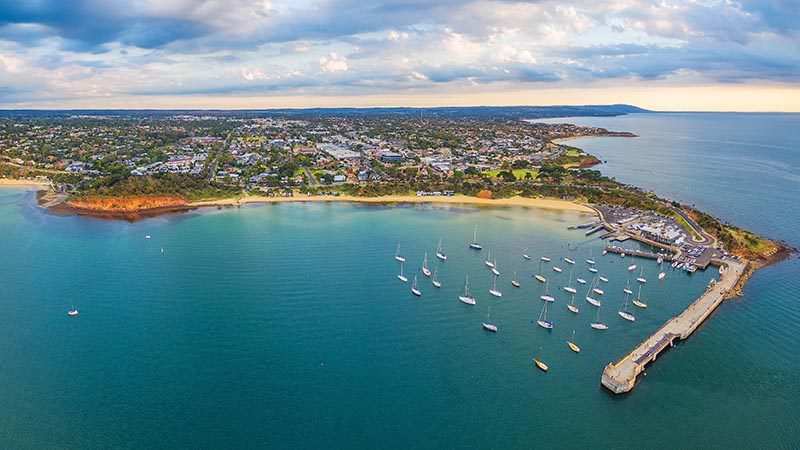- 04 Jun 2025
- By API Magazine

The outer fringes of Melbourne are the sole drivers of the property market in the city, as buyers compete for affordable options but largely steer clear of apartments.
he broader Melbourne property market remains in the doldrums — despite ongoing forecasts of a revival —but the city’s outer suburbs are being underpinned by relative affordability.
In the year to April, inner Melbourne was a sea of red ink, with just 4 per cent of suburbs recording price growth, according to Cotality, formerly CoreLogic.
Yet for suburbs 20km or more from the CBD, 38 per cent of suburbs saw growth during the year, as stretched affordability pushed buyers further afield.
Cotality Research Director Tim Lawless said the trend was reflected nationally, as strong capital growth “clustered in city outskirts”, where home values remained “just” within reach for many Australians.
“Households are making pragmatic decisions in response to tighter borrowing capacity and higher mortgage costs,” Mr Lawless said.
“That’s pushed demand towards the lower quartile of the market, and it’s across the outer suburbs that this value-driven demand is translating into the strongest growth.
“The trend is visible in every capital city,” he said.
It has certainly been the case in Brisbane, Sydney and Perth.
In Melbourne, the Hume, Frankston and Casey local government areas were “emerging as standout performers,” Mr Lawless said.
Over the year to 1 May, Tullamarine and Broadmeadows in the city’s north-west recorded the strongest price growth, at 1.9 per cent, taking the median dwelling value to $687,701.
Frankston on the Mornington Peninsula recorded the second highest price growth in the year, with dwellings rising 1.8 per cent to a median of $763,366.
Apartment oversupply
For Melbourne as a whole, prices grew 1.2 per cent in the three months to 1 June, but fell 1.2 per cent for the year.
Ashley Pollerd, Director of Melbourne-based buyers’ agency AJP Buyers Agents, said the relative affordability of Melbourne’s outer suburbs was drawing first home buyers and young couples.
“These (outer suburb) markets are well prices for first time buyers or upgraders including young families and those able to work from home and not needing to be in the city every day,” Mr Pollerd told Australian Property Investor Magazine.
He said the outer suburban markets were popular among investors seeking to buy houses, rather than apartments, which can suffer from oversupply, particularly in some inner-city markets.
“The outer suburbs, especially those well clear of the growth corridors of new supply, is why places such as Frankston and the Mornington Peninsula are attractive to owner-occupiers, tenants and investors,” Mr Pollerd said.
“They are priced well for investors including interstate buyers who are seeing growth value in Melbourne’s outer suburbs for houses.
According to Cotality, across Melbourne, the median dwelling value is $791,303 — down 4.5 per cent from its peak in March 2022 — with the prospect of growth drawing investors from interstate.
“Markets such as Perth have become very hot whilst Melbourne offers an option to get in at the bottom of the property clock,” Mr Pollerd said.
The likelihood of significant further interest rate cuts and a shortage of supply would support future growth.
Mr Pollerd said Melbourne suburbs offering the best prospects for capital growth included Frankston; Ferntree Gully in the city’s outer east; Pascoe Vale in the city’s north; Cheltenham, about 18km south-east of the CBD; and Elwood, in the city’s inner south-east.
According to Cotality, across Melbourne, dwelling values have grown 43.8 per cent over the past decade, which was the lowest rate of growth of any major capital.
Yet gross rental yields in the city — the annual rent return as a proportion of a property’s value — were the second lowest in the nation behind only Sydney, tying with Brisbane and Adelaide, at 3.7 per cent.
“Melbourne has seen a sharp drop in annual rental growth, easing from 9.4 per cent to 2 per cent, while Sydney rents are now rising just 1.9 per cent per annum, the slowest annual rise since April 2021,” Mr Lawless said.
“Population growth, which is a proxy for housing demand, has fallen back to the decade average of 0.4 per cent per quarter.
“Less population growth should help to take some heat away from housing value growth, but there is still a substantial cumulative undersupply that has accrued over the past few years.”
Geoff Oxford, Director, Seachange Property, said houses in Frankston, Frankston South and Mornington priced between $600,000 and $1.2 million were “selling like hotcakes”.
“You just can’t get enough of that type of property,” Mr Oxford told API Magazine.
But it was a very different story at the top end of the market on the Mornington Peninsula, where government taxes, including land tax, vacancy taxes and short-term rental taxes were weighing heavily on the market.
“Houses that were selling in Mount Martha in 2021 for over $4 million are now selling for just over $3 million,” Mr Oxford said.
The number of people viewing more expensive properties were “down 80 per cent on last year”, with that market “almost dormant”.
Article Q&A
Where are property prices performing the best and worst in Melbourne?
In the year to April, inner Melbourne was a sea of red ink, with just 4 per cent of suburbs recording price growth, according to Cotality, formerly CoreLogic. Yet for suburbs 20km or more from the CBD, 38 per cent of suburbs saw growth during the year, as stretched affordability pushed buyers further afield.
Are Melbourne property prices rising?
For Melbourne as a whole, prices grew 1 per cent in the three months to 1 May, but fell 2.2 per cent for the year. According to Cotality, across Melbourne, the median dwelling value is $786,158 — down 5.4 per cent from its peak in March 2022 — with the prospect of growth drawing investors from interstate.
